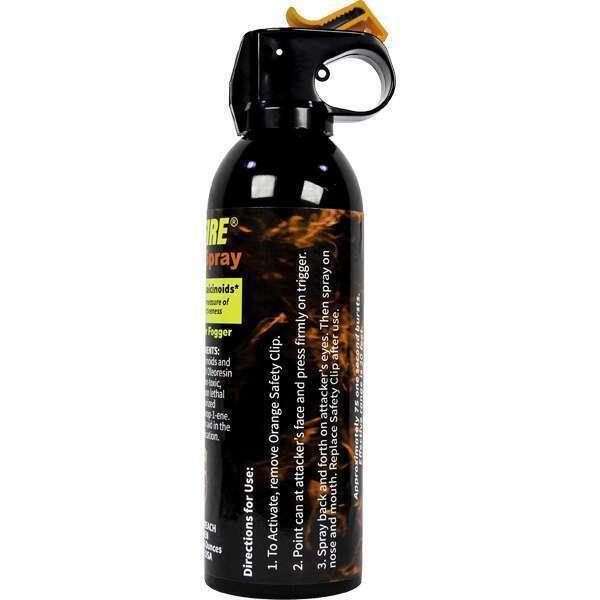Table of Contents
- Understanding the Effects of Pepper Spray on Skin and Eyes
- Essential First Aid Measures to Take Immediately After Exposure
- Choosing the Right Cleansing Agents for Effective Decontamination
- Step-by-Step Instructions for Safely Washing Off Pepper Spray Residue
- In Summary
Understanding the Effects of Pepper Spray on Skin and Eyes
Pepper spray contains capsaicin, a potent compound derived from chili peppers, which triggers intense irritation upon contact with skin and eyes. When sprayed, capsaicin binds to nerve receptors, causing a burning sensation, redness, swelling, and even temporary blindness if it reaches the eyes. The severity of symptoms can vary depending on the concentration of the spray and the duration of exposure. It’s important to recognize that the effects are typically temporary but highly uncomfortable, necessitating prompt and proper decontamination to alleviate pain and avoid any prolonged damage.
Upon exposure, the skin’s natural oils can trap capsaicin, making it resistant to plain water. This is why specialized washing techniques are recommended. For the eyes, the spray can cause involuntary tearing and difficulty opening them, so gentle flushing with clean, cool water or saline solution is essential. Avoid using harsh soaps or scrubbing, as these can exacerbate the irritation. Key effects to monitor include:
- Intense burning and redness on the skin
- Swelling and a stinging sensation on contact
- Watery, red, and sensitive eyes
- Temporary blurred vision or inability to open the eyes fully
Essential First Aid Measures to Take Immediately After Exposure
Immediately after exposure to pepper spray, your primary goal should be to minimize the irritation and prevent any further damage. Avoid touching your face, especially your eyes, as this can worsen the spread of the irritant. Quickly move to an open area with fresh air to help clear your respiratory passages. If possible, gently remove any contaminated clothing to limit contact with your skin. It’s crucial not to rub or scratch the affected areas, as this action can enhance the burning sensation and inflammation.
Next, focus on flushing the contaminated regions with copious amounts of cool water. Use a gentle, continuous stream to wash your eyes and skin, which helps to dilute and remove the pepper spray particles. You can also use saline solution for the eyes if available, as it provides comfort and aids in cleansing without causing further irritation. Be patient-rinsing should continue for at least 15 to 20 minutes to ensure thorough removal. Resist using soap, creams, or oils immediately, as they may trap the irritants or exacerbate discomfort.
Choosing the Right Cleansing Agents for Effective Decontamination
When dealing with the aftermath of pepper spray exposure, selecting the appropriate cleansing agents is crucial to halt irritation and expedite recovery. Simple water rinses often fall short because capsaicin, the active irritant in pepper spray, is oil-based and not water-soluble. Instead, products that can break down oils and neutralize acids work best. Consider using oil-removing cleansers or specially formulated pepper spray neutralizers designed to effectively dissolve the oily compounds without exacerbating skin sensitivity.
Here are some recommended types of cleansing agents to keep on hand:
- Dish soap or detergent: These are crafted to cut through oils and grease, making them an excellent choice for cleansing affected skin.
- Milk or dairy-based washes: The fats in dairy can help lift the capsaicin away from skin cells, providing a soothing effect.
- Specialized neutralizing sprays or gels: Commercial products designed for pepper spray decontamination, often containing buffering agents to restore pH balance.
Avoid harsh soaps or scrubbing vigorously, as this can spread the irritant or damage delicate skin tissue. Prioritizing gentle yet effective cleansing agents tailored to combat oily irritants ensures a safer and more comfortable recovery process.
Step-by-Step Instructions for Safely Washing Off Pepper Spray Residue
Begin by moving to a well-ventilated area to avoid further irritation from airborne particles. Use lukewarm water to gently rinse the affected skin-extreme temperatures can exacerbate the burning sensation. While rinsing, avoid scrubbing or using harsh soaps, as this can spread the irritant and cause more damage. Instead, let the water run over the area for several minutes, allowing the pepper spray residue to naturally wash away. If you are wearing contaminated clothing, carefully remove it to prevent further contact without rubbing it against unaffected skin.
After thoroughly rinsing with water, apply a mild, fragrance-free cleanser designed for sensitive skin to help eliminate residual oils from the spray. Use soft motions, patting rather than rubbing, to cleanse the area. Once cleaned, gently pat the skin dry with a clean towel and avoid touching your face or eyes. To soothe lingering discomfort, you can apply a cool compress or an over-the-counter topical agent formulated for irritation relief. Remember, patience during the washing process is key to preventing additional harm and promoting comfort.
In Summary
In conclusion, knowing how to safely wash off pepper spray is essential for minimizing discomfort and preventing further irritation. By following the step-by-step guide outlined above-using cool water, avoiding harsh scrubbing, and choosing the right cleansing methods-you can effectively alleviate the burning sensation and start to recover quickly. Remember, if symptoms persist or worsen, seeking medical attention is always the best course of action. Stay informed, stay prepared, and prioritize your safety.Check Our Other Blogs
- StunGun – Your Trusted Source for Stun Guns, Laws, and Self-Defense Tips
- PepperSprayLaws – Your Trusted Resource for Pepper Spray Information
- StunGunLaws – Your Trusted Guide to Stun Gun Legality and Safety




